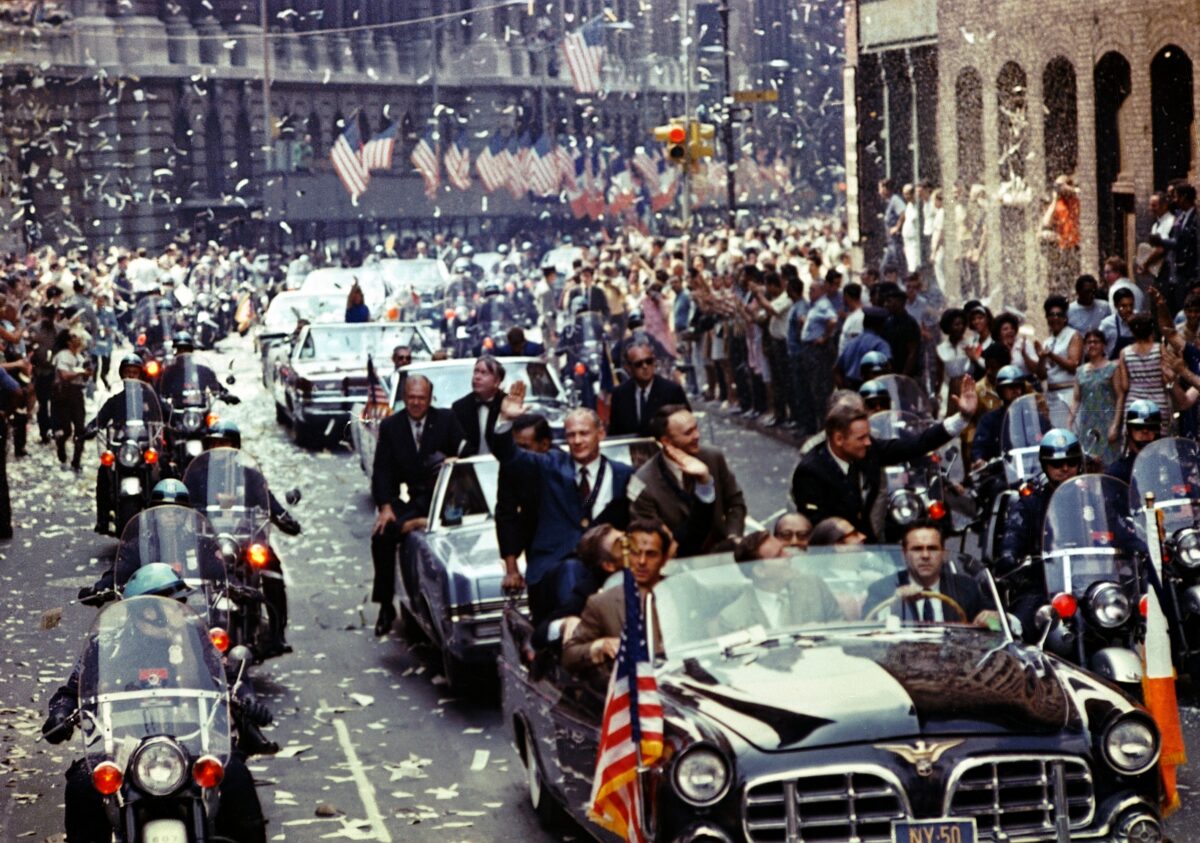In 1886, during a miles-long parade celebrating the dedication of the Statue of Liberty, office workers in lower Manhattan began heaving ticker tape out the windows, creating a magical, blizzard-like landscape.
That tradition stuck. Today that particular corridor of Broadway — connecting Battery Park to City Hall — is known as the “Canyon of Heroes” thanks to the popularity of the ticker-tape parade.
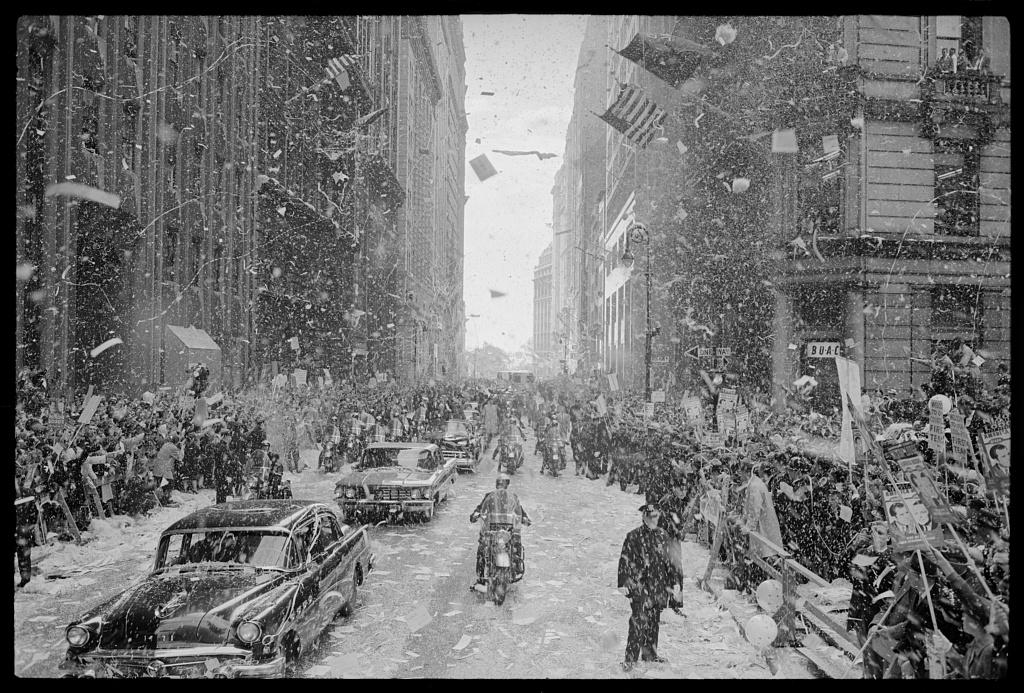
While many cities with skyscrapers host ticker-tape parades today, New York was the place they originated in the late 19th century and for a very obvious reason — the ticker-tape itself, a byproduct of the Financial District which revolutionized the way stocks were traded.
New York has regularly honored athletes, politicians, pilots, kings and queens, astronauts and generals with ticker-tape parades for over 125 years. Today, they’re best known as a way to celebrate New York sports teams, the winners of the World Series, the Super Bowl or the Stanley Cup.
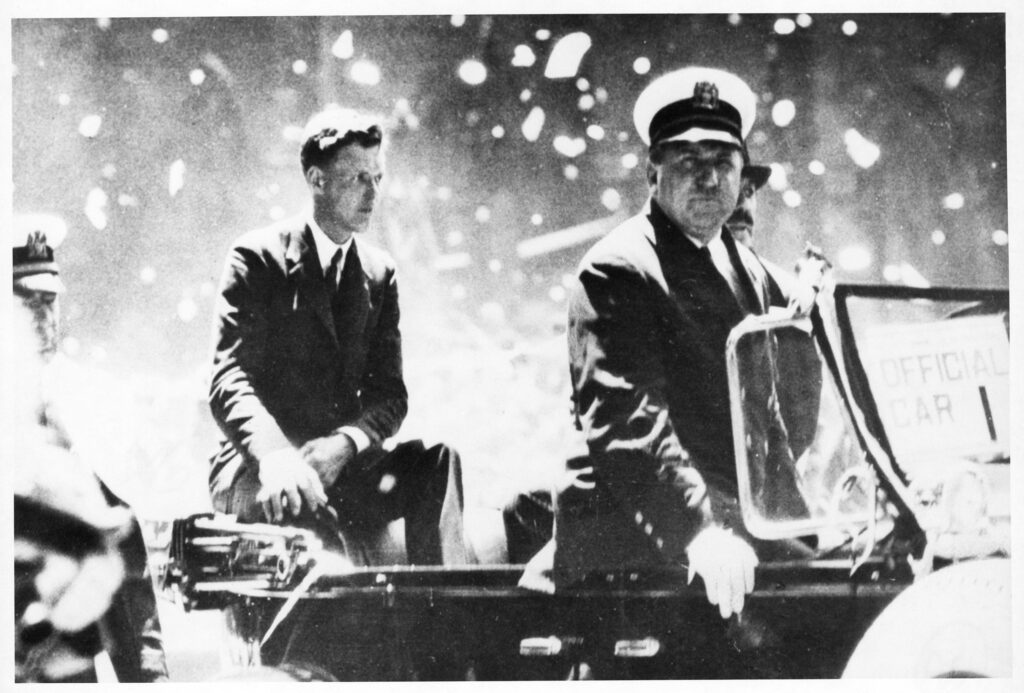
The story of the ticker-tape parade is also a story of modern American history in capsule form, celebrating technological achievements, victories in war, cultural milestones and international unity.
Greg and Tom are back in the studio to give you a rundown of New York’s greatest parades. And they also pay tribute to those other local heroes — the Department of Sanitation who cleans up after these festive but messy celebrations.
LISTEN NOW: THE TICKER-TAPE PARADE
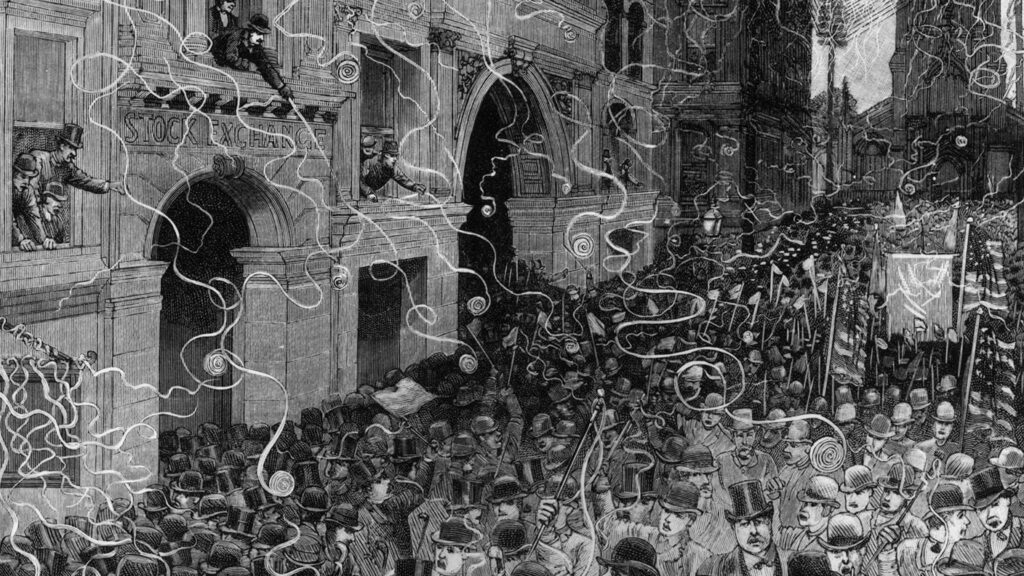
Parade for the 1924 Olympians, New York Times, August 7, 1924
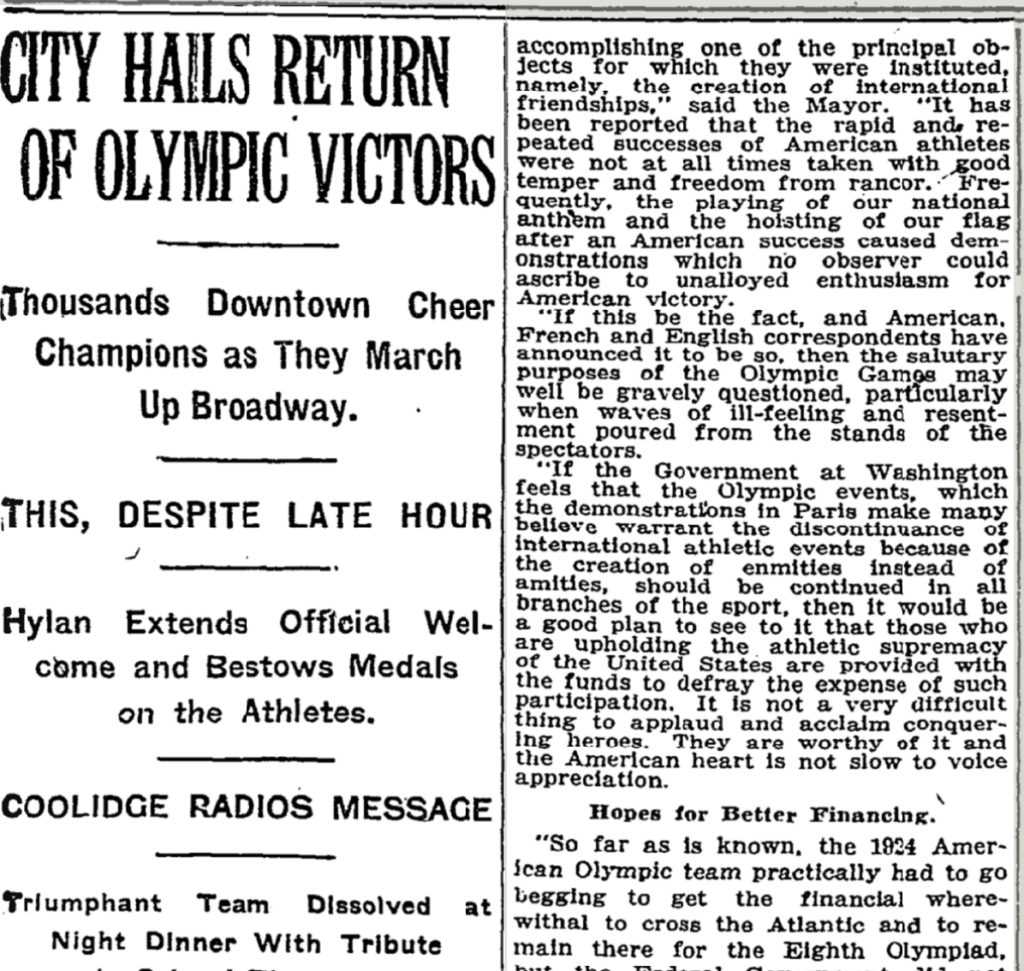
Parade for the Statue of Liberty dedication, New York Times, October 29, 1886
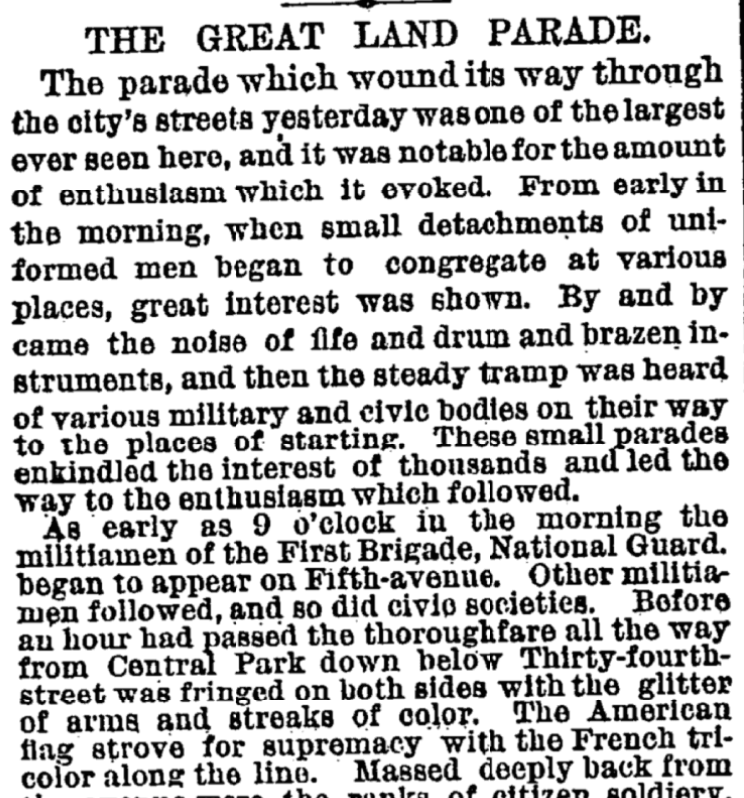
Roosevelt’s return from safari, New York Tribune, June 19, 1910
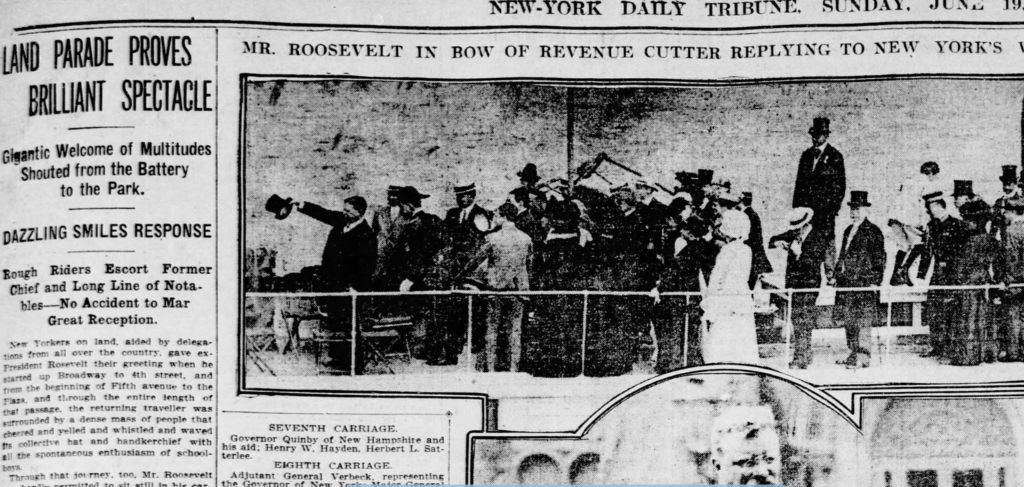
The parade for Gertrude Ederle, Brooklyn Citizen, August 27, 1926
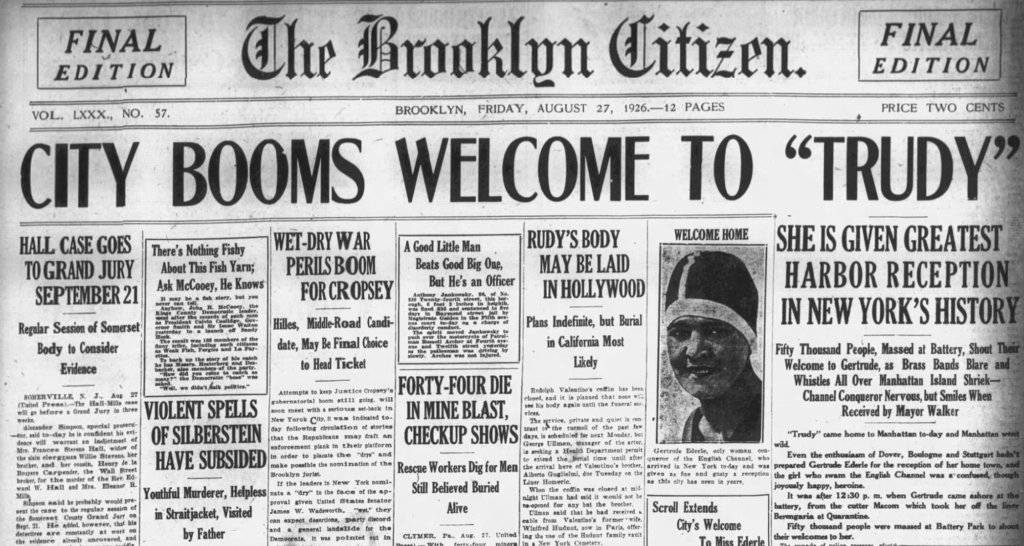
Ederle’s accomplishments and her ticker-tape parade are depicted in the Disney+ film The Young Woman and the Sea
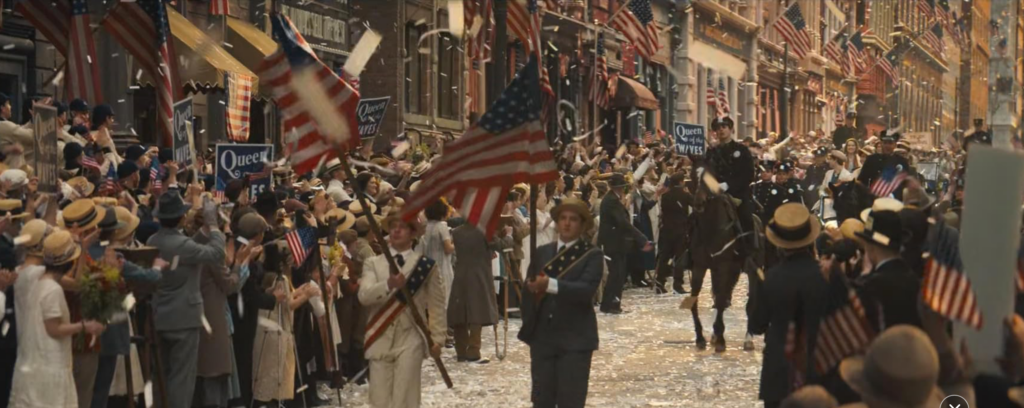
A reimagined ticker-tape parade — for a celebration inspired by the Moon landing — recently appeared in the film Indiana Jones and the Dial of Destiny

